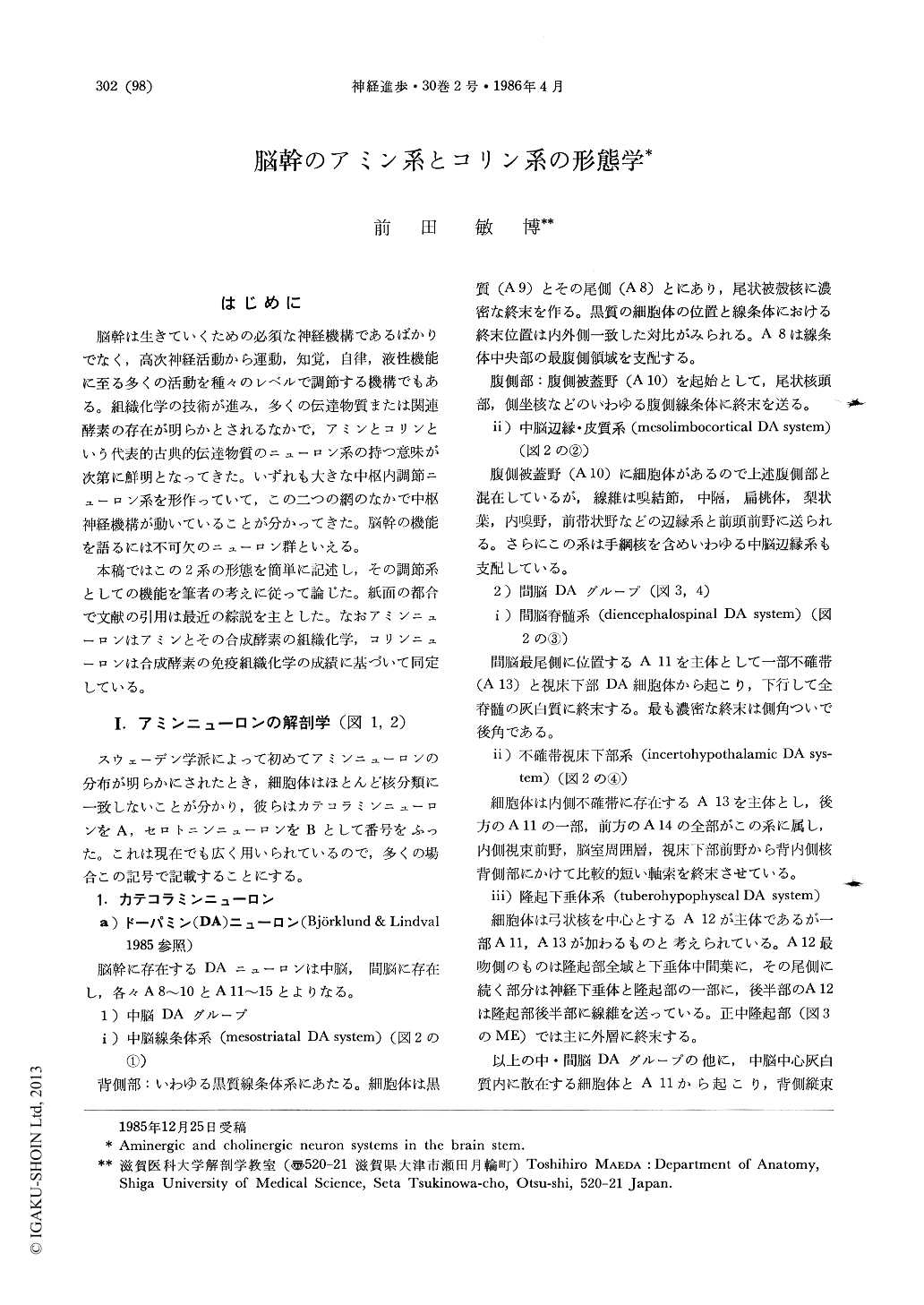Japanese
English
- 有料閲覧
- Abstract 文献概要
- 1ページ目 Look Inside
はじめに
脳幹は生きていくための必須な神経機構であるばかりでなく,高次神経活動から運動,知覚,自律,液性機能に至る多くの活動を種々のレベルで調節する機構でもある。組織化学の技術が進み,多くの伝達物質または関連酵素の存在が明らかとされるなかで,アミンとコリンという代表的古典的伝達物質のニューロン系の持つ意味が次第に鮮明となってきた。いずれも大きな中枢内調節ニューロン系を形作っていて,この二つの網のなかで中枢神経機構が動いていることが分かってきた。脳幹の機能を語るには不可欠のニューロン群といえる。
本稿ではこの2系の形態を簡単に記述し,その調節系としての機能を筆者の考えに従って論じた。紙面の都合で文献の引用は最近の綜説を主とした。なおアミンニューロンはアミンとその合成酵素の組織化学,コリンニューロンは合成酵素の免疫組織化学の成績に基づいて同定している。
The brain stem plays an important role, beside the neural mechanism essential for living of organism, as a modulator of various functions of the central nervous system, from higher mental to humoral ones. Recent progress of techniques has revealed that both aminergic and cholinergic neu-rons may constitute extensive regulation systems in the brain and spinal cord. In the present paper, anatomy of the central aminergic and cholinergic neuron systems is described and their functional significance is briefly discussed.
Aminergic neurons may be classified roughly into two types in terms of morphology, namely long axoned and short axoned neurons. Most of them are comprised in the former type and noradrenaline (NA) containing neurons are the most typical examples. They have a small number of the cell bodies in the brain stem and innervate enormously large region throughout the central nervous system. The locus coeruleus NA neurons, for example, contribute to entire NA content of the cerebral cortex by ascending fibers originating from a limited number of the cell bodies, i.e., several hundreds in rat and twenty or thirty thousands in man, and influencing probably billions cortical neurons. Such structure of neuron may be suitable not for transmission of certain neural information such as motor or sensory activity, but for fluctuation in activity diffusely at various levels of neuron chains. In fact, lesion of the NA ascending projection from the locus coeruleus results in a considerable increase of synchronized slow wave in cortical EEG.

Copyright © 1986, Igaku-Shoin Ltd. All rights reserved.


